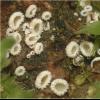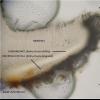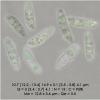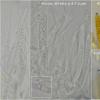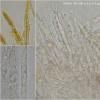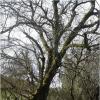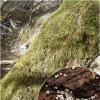
20-12-2025 23:08
Patrice TANCHAUDBonsoir, récolte sur sol sablonneux dans l'arri�

20-12-2025 15:47
Mirek GrycHi.These grew on pine wood that was heavily covere

18-12-2025 21:17
Pol DebaenstThe identification took me to Byssonectria deformi

15-12-2025 07:09
 Danny Newman
Danny Newman
indet. Rutstroemiaceae sp. on unk. fallen leavesMc

19-12-2025 10:10
Patrice TANCHAUDBonjour, récolte réalisée en milieu dunaire, a

18-12-2025 17:23
 Bruno Coué
Bruno Coué
Bonjour,je serais heureux d'avoir votre avis sur c

18-12-2025 18:07
Margot en Geert VullingsThese plumes were found on rotten wood.They strong

17-12-2025 18:35
 Michel Hairaud
Michel Hairaud
Bonjour à tous/Hi to everyone I am passing along
I found a group of apothecia growing on the bark of a living tree (perhaps Salix). Apothecia size is up to 800 um in diameter. Both, hairs as hymenium are white. Except base of mature apothecia that take a reddish-brown color. It also appears that the hymenium taking a yellowish when ripe.
The features are similar to Lasiobelonium lonicerae, but in this case I see that the hairs are hyaline and I think that may correspond to Lasiobelonium "album".
Is that correct?
Gracias, un saludo
Susana

wonderful docu as always!
And splendid collection! A bit wider spores and more multiguttulate, but you must know that my sample was dry when I got it almost 3 months later. So now i know the original guttule pattern of this species!
You say the tree was alive, do you have photos of the leaves?
My drawing is ready for publication, ony I have no time at all.... :-(
Zotto
Saludos,
Susana


If you find out or know the Quercus species please let me know. I conclude the tree stands directly at a rivulet and the fungus is perhaps 1 m above ground?
When I saw the habitat I thought it might be only a pale variant of Lasiobelonium lonicerae?
I do not know what kind of Quercus is. If I find out, I'll tell you.
Yes, the apothecia were about a meter off the ground on the bark of a tree growing in a stream.
I archive it as pale variety o L. lonicerae?
Saludos
Susana


